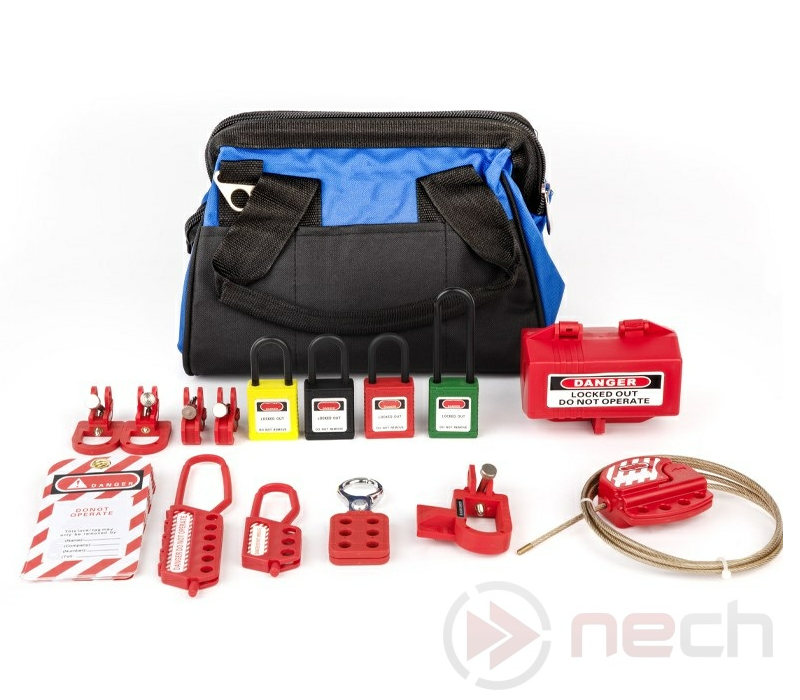How to choose a LOTO exclusion tool?

LOTO (Lockout/Tagout) covers safety exclusion devices and the exclusion systems that can be built from them. In industrial, manufacturing, processing or laboratory environments, LOTO devices are essential to ensure compliance with health and safety regulations and guidelines.
LOTO (Lockout/Tagout) comprises safety exclusion devices and exclusion systems that can be built up from them. In industrial, manufacturing, processing or laboratory environments, LOTO devices are essential to ensure compliance with health and safety regulations and guidelines. These LOTO devices can be used to easily isolate hazardous devices from connection to the power source, ensuring that they cannot cause injury to maintenance personnel. By using the procedure and exclusions, you can disconnect and safely exclude work equipment from the work environment.
LOTO devices are specialised devices of various shapes and sizes; for example, padlocks, tags, circuit breaker lockouts, switch lockouts, pneumatic and hydraulic energy lockouts, interlocks, and other energy isolating and disconnecting devices.
Since every area is different, we can only provide general guidance on the devices used. We recommend seeking the help of a specialist for the systemic design of the complete protection that occurs in the plant area.
LOTO devices are powered by fixed energy sources and cannot be opened. By type, the most common are:
LOTO padlocks and lockout hasps
Lockouts are most often secured with a safety padlock so that only the worker who has placed the LOTO device can remove it (with a few exceptions, such as the use of a master key.) Collector padlocks disconnect the power source by holding several padlocks at once, which ensures that the machine or equipment cannot be energized until each worker removes his or her own padlock. The use of collective hasps are particularly important in group work, use of group lockouts.
Plug or socket lockouts
This type of device seals the end of the socket so that it cannot be plugged into the power source. The device must be large enough to completely enclose the socket. Socket lockouts also perform this function. They prevent a plug from being connected to the socket.
Circuit breaker lockouts
The circuit breaker lockouts are locks the circuit breakers when they are in switched off mode. Most devices can be simply snapped in or secured with a screw and LOTO padlock. It is very important to choose the right size. When locked, the switch must be immovable and completely secure.
Valve lockouts
The valve lockouts are designed to prevent the equipment on which the valve is operating from being energised or energised. There are 3 common types of valve locking:
- Gate valves lockouts the valve handle in place when the device is in use so that it cannot be turned. The locking device must be able to rotate freely around the handle.
- The ball valve lockouts shall close the energy-carrying piping by locking the valve handle.
- The butterfly valve lockout devices slides over the butterfly valve, secures it and locks the valve in the closed position.
Push button lockouts
The button lock device is used to ensure that the locked buttons on the electrical control panel of the machines cannot be pressed.
Cable lockouts
Cable lockouts can be used for a wide range of locking applications, usually where handles, levers or switches are difficult to reach or other devices cannot be used. A cable is locked around the appropriate valve lever or switch when closed, then secured with a locking LOTO padlock. Some cable locking devices incorporate a tensioning or clamping element to allow the cable to be locked as easily and firmly as possible.
Requirements for the lockout devices
The lockout devices used must be able to withstand the operating, working conditions and must be standardised by colour, shape or size. It is also an important requirement that the worker who places the device must necessarily be clearly identifiable to all - so the main requirement is that the LOTO device must be reliable and easily identifiable.
LOTO devices should be tested under actual locked conditions before use to ensure that they actually work as designed! The use of standardization and personalization helps to define the purpose of the device and firmly establishes the identity of the person who placed and removed the device.
